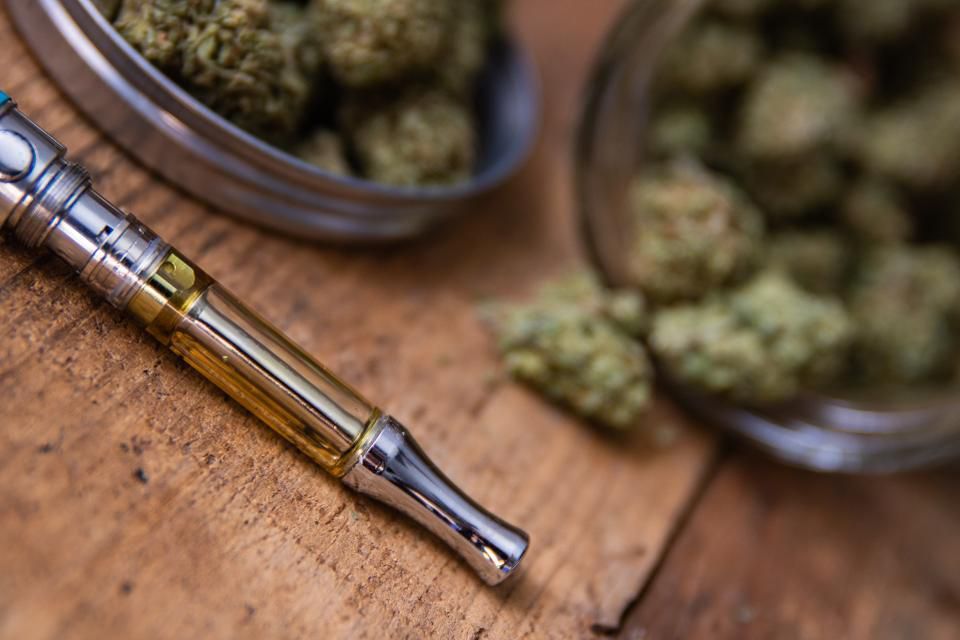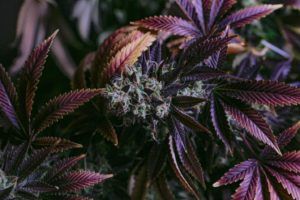Over the past few months the media has been awash with reports of people getting sick from vaping. Nearly every day, news outlets report on otherwise healthy, usually young, people who have fallen critically ill from the use of vapes that they believed to be a safer alternative to smoking. In response, politicians have been taking action to get ahead of the problem, with most relying on some form of vape ban. A handful of governors and President Trump have proposed banning all flavored vape cartridges, while Massachusetts Gov. Charlie Baker declared a public health emergency and banned the sale of all vape products in the state for four months.
While these actions may be well meaning, they are likely to only exacerbate the problem. If policy makers truly want to reduce or eliminate vaping-related illnesses, the most responsible solution would be to fully legalize marijuana nationwide, and ensure robust regulation, oversight, and education for users of both cannabis and nicotine vape products.
Thankfully, not all governments are responding to the hysteria with bans and prohibitions. In Pennsylvania, the Department of Public Health, which oversees that state’s medical marijuana program, released a statement expressing confidence in the safety of cartridges made by its state-licensed medical cannabis producers and warning patients to not purchase from illicit vendors. Instead of ordering an outright ban, California Gov. Gavin Newsom announced he would seek to expand warning labels on vaping products, start a $20 million public awareness campaign about the dangers of vaping, and increase enforcement against counterfeit products.
It is understandable that the public would be concerned about the seemingly sudden rash of vape-related illnesses. After all, vaping has largely been marketed as a safer method of ingesting nicotine or cannabis than traditional smoking. The problem should absolutely be taken seriously. But it is also important to note that we still don’t have enough information. On Oct. 4, the acting commissioner of the Food and Drug Administration issued a statement, including this relevant fact: “At this time, the FDA does not have enough data to identify the cause, or causes, of the lung injuries in these cases.”
It’s also important to keep the problem and the numbers involved in perspective. To date, 805 cases of people suffering from vape-related illnesses and at least 12 deaths have been reported to the Centers for Disease Control and Prevention (CDC). These are genuine tragedies. But so are the 130 Americans who die every single day from an opioid overdose and the 480,000 people who die each year in the United States whose deaths are attributed to smoking cigarettes, according to CDC data.
Despite the relatively small number of vape-related illnesses and deaths, the nation seems to be amid a media-fueled hysteria around the issue of vaping. History has shown us that hysteria rarely leads to good public policy. In fact, it often leads to the kind of prohibitionist policies that we’re now seeing offered up as a response to the current crisis.
Hysteria ≠ Good Public Policy
We don’t need to look further than the history of cannabis prohibition to see just how public hysteria can lead to policies that cause genuine public health and societal harm. Cannabis was originally prohibited as a result of a public education campaign led by Harry Anslinger and the remnants of the federal alcohol prohibition enforcement regime. The news media was quick to report on sensationalist propaganda provided by Anslinger claiming that marijuana-induced violence and insanity, and worst of all, blatantly racist claims that African Americans and Mexican Americans would use cannabis to fuel violence and sexual assault against unsuspecting white women. This led to nearly 100 years of cannabis prohibition in the United States, with millions of lives ruined by arrests and incarceration for engaging in a behavior that we now recognize as substantially less harmful than consuming alcohol or tobacco.
In the 1980s, the country fell into a hysteria over the “crack epidemic,” with press accounts of a growing number of babies being born hopelessly addicted to crack cocaine and clinging to life itself. When top NBA draft pick Len Bias died of an overdose, the U.S. Congress, championed by current Democratic presidential frontrunner Joe Biden, adopted the 1986 crime bill that put in place a 100-to-1 sentencing disparity between crack cocaine and powder cocaine, despite the fact they are nearly identical substances, and ushered in a new era of draconian mandatory minimum sentences that led to our current mass incarceration crisis and the imprisonment of a generation of young men of color across the United States. The bitter irony is that Len Bias died of an overdose after using powder cocaine, not crack.
This hysteria-fueled mass incarceration has been more devastating to inner city communities than crack cocaine could ever have been. And it was fueled by hysteria. Even the authors of the original study that claimed that an increasing number of babies were being born addicted to crack cocaine have admitted they were wrong. Once the researchers controlled for issues of socioeconomic status, exposure to tobacco and alcohol, and access to prenatal care, it became clear these children were simply victims of poverty, born mostly to low-income women without access to health insurance or good prenatal care and education.
In the end, the “solution” to that public health crisis, which was born of hysteria, resulted in the imprisonment of large swaths of a community, exacerbated poverty, and led to far worse public health outcomes.
Vaping Bans Are Not The Answer
Today, once again, we find ourselves amid a public health hysteria, and thus far most elected officials’ responses have been just as reactionary and detrimental to public health as these previous prohibitionist and draconian solutions to prior drug-related concerns.
This applies to the reactions to both nicotine and THC vaping products. So far, the most common reaction to nicotine vaping has been to ban the sale of flavored e-cigarettes. In fact, elected officials seem to be using the vape-related illnesses to accelerate their existing plans to quash flavored vaping. To be fair, there is a genuine public policy debate to be had over whether vape cartridges with flavors like tutti-frutti and cotton candy should be available for purchase because of their appeal to young people. But there’s nothing inherently wrong with flavored vapes, which studies have shown can help people kick their more damaging cigarette habit. So, here we have yet another instance where an unintended consequence of banning flavored vapes may lead to worse health outcomes as more nicotine users return to their more harmful cigarette habit. Yet I digress; bottom line is that the debate over flavored vapes is a separate debate from that over vape-related illnesses, which seem to be far more connected to illicit market cannabis products than legally regulated flavored or unflavored nicotine vape cartridges.
But the reaction to ban all vape sales, as they have in Massachusetts, may have hugely negative public health consequences. After all, people who use nicotine vapes are generally addicted to nicotine. Ask any smoker how difficult it is to quit tobacco and it is understandable that people who have been vaping will not simply give up the habit. Without access to legal and regulated vape cartridges they will face two options: obtain illicit-market nicotine vape cartridges produced in an unregulated facility and with no way of knowing what additives and cutting agents may be present in the cartridge, or go back to smoking cigarettes. It’s true that we don’t fully understand the long-term health effects of vaping. But we certainly understand the long-term effects of cigarette smoking, and it is one of the most destructive things a person can do for their long-term health. Driving people back to cigarettes is guaranteed to cause catastrophic public health problems.
On the cannabis side of the equation, banning legally produced cannabis vape cartridges could be the most counterproductive response possible. Of the vaping-related illnesses, the vast majority appear to be related to counterfeit illicit market products that contain pesticides, additives and cutting agents dangerous to human health. By eliminating access to licensed and regulated products, states like Massachusetts may be inadvertently driving these customers and patients to the illicit market that’s causing these problems in the first place.
In response to the wave of vape-related illnesses, NBC News took cartridges purchased in California dispensaries and knock-off cartridges purchased from unlicensed delivery services and brought them to CannaSafe, an accredited testing lab. The results were troubling, and only reinforce why these bans are destined to fail. All the illicit-market products contained dangerous substances like pesticides and hydrogen cyanide, a byproduct created by myclobutanil-based fungicides like Eagle 20, which is banned for use on plants grown for human consumption, including in every legal cannabis and medical marijuana market in the country. None of these contaminants were found in the legally produced products that CannaSafe tested.
Dangers Of The Illicit Market
It makes sense that illicit products would contain higher levels of dangerous contaminants than their legally produced counterparts—there are no pesticide regulations in the illicit market. The use of pesticides and fungicides, some of which are not safe for human consumption, lead to higher yields and healthier looking plants. But the use of these substances is worrisome because when the raw flower is concentrated into oil, the biomass is reduced, but not the pesticide load. What that means is that not only is the THC concentrated, but the pesticides are too—and in the case of myclobutanil-based substances, they turn into cyanide when combusted. Bottom line: Without state-mandated product testing, consumers have no way of knowing that these chemicals were used in the production of their cannabis.
Another problem arises from the fact that producers of illicit-market vape cartridges often cut their cannabis oil with thinning agents to decrease potency and increase profit margins. Then, to increase viscosity back to the level consumers expect to see, they add thickening agents, the most popular of which is Vitamin E acetate.
While there have been vaping illnesses in legal states, many associated with unregulated delivery services in places like California, most have taken place in states like Illinois or Wisconsin that have highly restrictive medical marijuana programs or no access to legal cannabis. Consumers in these states like vaping cartridges for the same reasons as everyone else: convenience, discretion, and an aversion to smoking. These folks generally do not have the same brand awareness of products that are available in legal states, leading distributors to sell cartridges in fancy packaging with names like Dank Vapes and Chronic Carts that look like legitimately produced products. Some sell bootleg versions of actual products like Kingpen and Brass Knuckles to consumers who are likely unfamiliar with these brands’ actual packaging and purchase them believing they are buying a product that had been legally bought in California or Colorado and diverted to prohibition states. In many cases, exact replicas of current California compliant brand packaging are for sale on eBay.
Legalization And Its Corresponding Regulations Are the Answer to Vaping Concerns
The most effective way to combat these illicit-market products is for every state and the federal government to legalize cannabis so that vape production can be regulated under a uniform set of rules. With cannabis legal nationwide, there would be little reason for producers to bootleg legal products to ship out of state, since these products would be available to any cannabis consumer anywhere in the country.
Not that every state has done a great job with regulatory oversight today. At least two deaths in Oregon may be linked to products purchased from the legal market. But these still represent a small number of the overall deaths and illnesses. And with these occurring within the confines of a legal state, regulators and legislators have many tools available to them to adjust and adopt more robust regulations and enforcement practices.
Prohibition only drives consumers to the illicit market where more dangerous products are rampant, and results in negative public health impacts.
As the country continues to wrestle with how to handle vape-related illnesses, we would be wise to heed the lessons of the past and recognize that the most effective remedy is legalization, regulation, and education.




